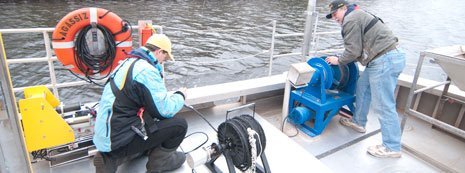Phototransformation Induced by HO Radicals
Document Type
Book Chapter
Publication Date
2016
Abstract
The hydroxyl radical (HO•) is a strong oxidizing agent that can transform dissolved organic matter (DOM) into many intermediate photoproducts and byproducts, which include low molecular weight (LMW) DOM, hydrogen peroxide (H2O2), CO2, dissolved inorganic carbon (DIC: dissolved CO2, H2CO3, HCO3−, and CO32−), NO3−, NH4+, and so on, in surface waters. Furthermore, HO• has a prominent role in the transformation of recalcitrant pollutants into more biodegradable compounds. This chapter discusses the key sources of HO• in natural waters and elucidates the phototransformation pathways of high molecular weight (HMW) and low molecular weight (LMW) DOM induced by HO•. As an example, the photooxidation of methylmercury chloride (MeHgCl) by hydroxyl radicals is discussed along with its reaction mechanism. Among the possible indicators of DOM transformation, the decrease in the fluorescence intensity of autochthonous fulvic acid is discussed based on field observations. The presented results suggest that HO• may be involved in the photooxidation of both HMW and LMW DOM in surface waters.
Publication Title
Surface Water Photochemistry
Recommended Citation
Mostofa, K. M.,
Liu, C.,
Sakugawa, H.,
Fu, P.,
Minella, M.,
Vione, D.,
Minakata, D.,
&
et. al
(2016).
Phototransformation Induced by HO Radicals.
Surface Water Photochemistry.
http://doi.org/10.1039/9781782622154-00117
Retrieved from: https://digitalcommons.mtu.edu/cee-fp/18


Publisher's Statement
Publisher's version of record: http://dx.doi.org/10.1039/9781782622154-00117